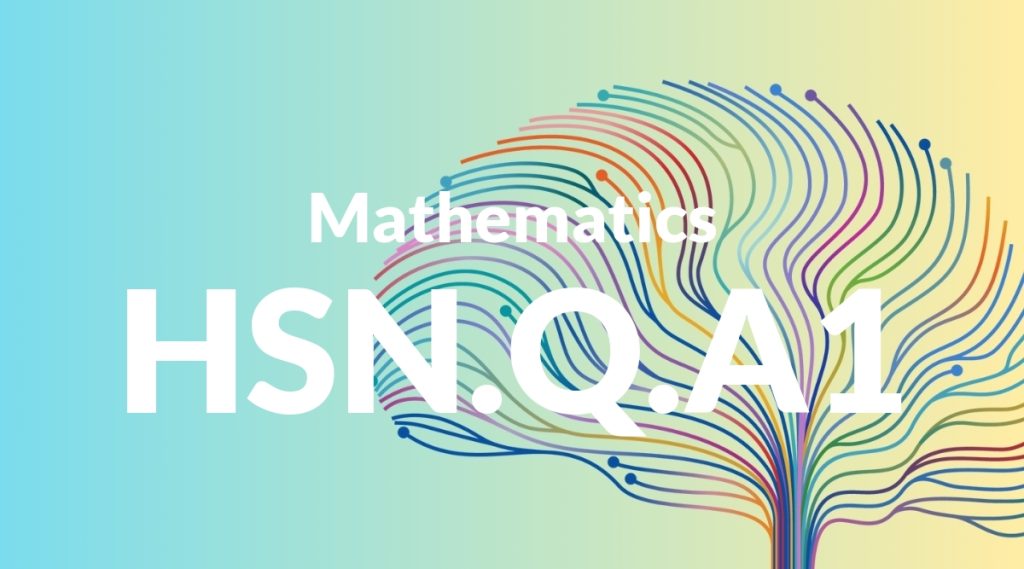Standard: HSN.Q.A1 – Use units as a way to understand problems and to guide the solution of multi-step problems; choose and interpret units consistently in formulas; choose and interpret the scale and the origin in graphs and data displays.
Grade level: High School: Number and Quantity
Subject: Mathematics
Domain: Quantities
Teacher Overview
This standard emphasizes the importance of using units to understand and solve problems. It is crucial because it helps students develop the ability to analyze and interpret data accurately, which is a fundamental skill in mathematics and science. Students should have a solid grasp of basic arithmetic, units of measurement, and introductory graphing skills.
Students will be able to apply their understanding of units and scales to more advanced topics in science and engineering, enhancing their problem-solving skills and data analysis capabilities.
Common Misconception 1
Some students might think that units are just labels and do not affect the outcome of a problem. This is incorrect because units are essential for ensuring that calculations are accurate and meaningful.
Intervention 1
Incorporate real-world problems where incorrect units lead to significant errors, such as mixing up units in a recipe or misinterpreting speed limits.
Common Misconception 2
Students may believe that the scale and origin of a graph are arbitrary and do not impact the data’s interpretation. This is incorrect because different scales and origins can significantly alter the visual representation and understanding of data.
Intervention 2
Provide graphing exercises where students must choose appropriate scales and origins and discuss how these choices affect data interpretation.
Prerequisite Knowledge
Students should have a basic understanding of arithmetic operations, familiarity with units of measurement, and an introduction to graphing and data interpretation.
Subsequent Knowledge
After mastering this standard, students will be able to apply their understanding of units to more complex problems in physics, chemistry, and engineering, and will be better prepared to analyze real-world data in various fields.
Instructional Activities
- Solve multi-step problems involving unit conversions.
- Create graphs with different scales and origins and analyze the differences.
- Interpret units in various formulas and apply them consistently.
- Use real-world scenarios to practice choosing appropriate units.




